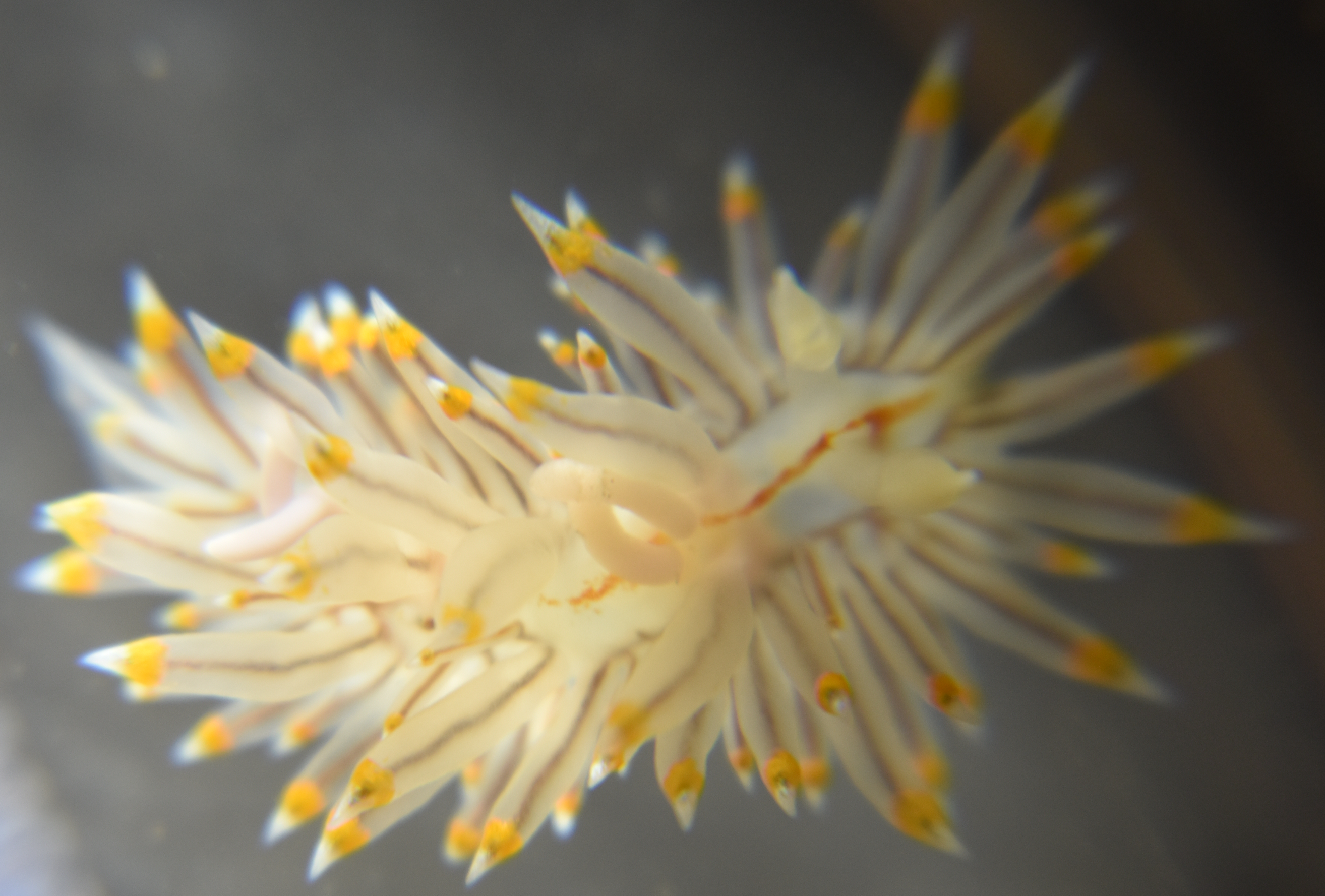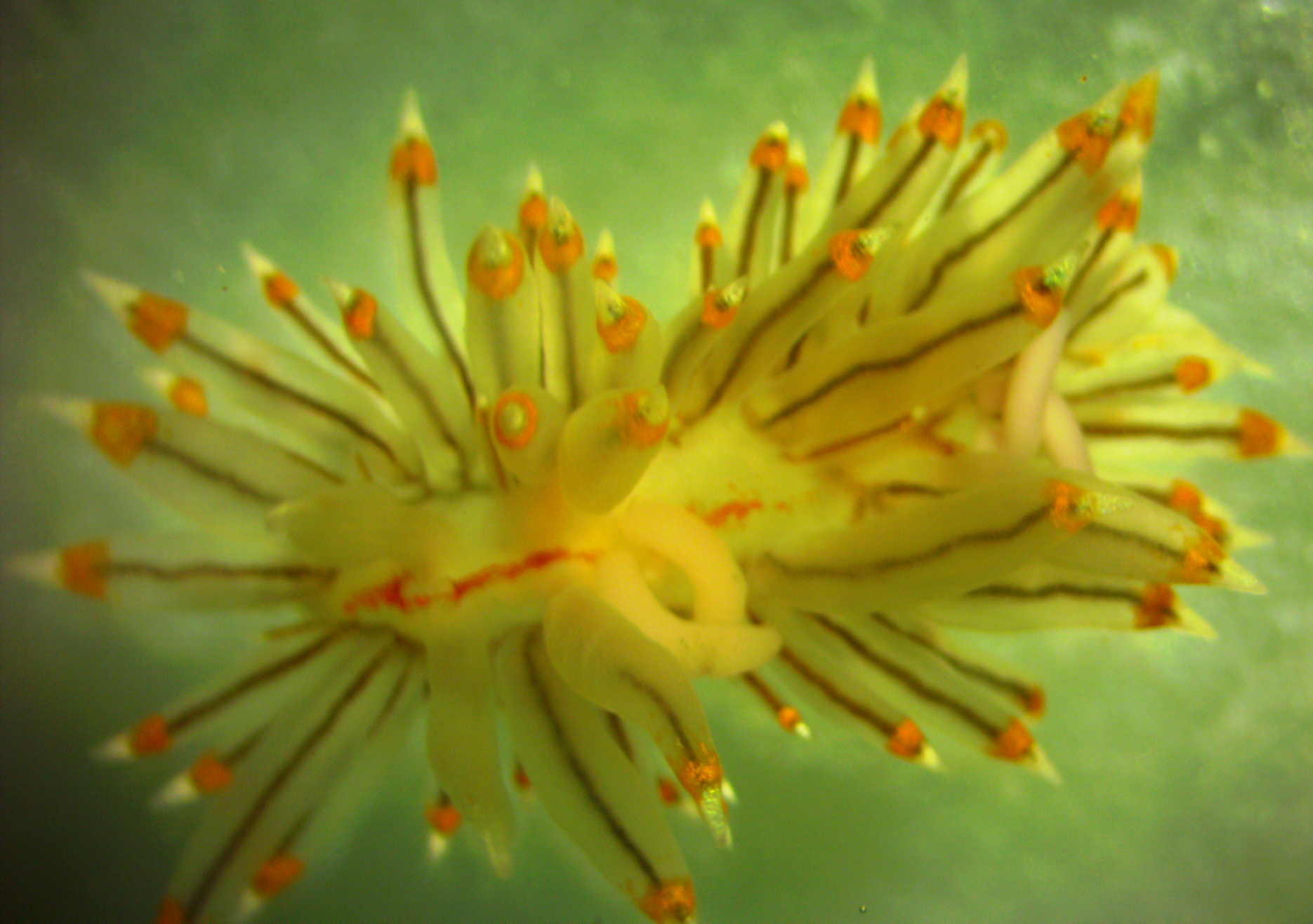Description: As with most Arminaceans, Janolus fuscus has an anus on a conspicuous papilla on the right side of the dorsum, more than halfway back along the dorsum. The clavus of the rhinophores cannot be retracted and it has no sheath. This species has no white longitudinal ridges on its dorsum although it has dorsal lines. The body is translucent white with a dorsomedial red line (sometimes interrupted) running between the rhinophores and from near the rhinophores to near the posteriormost cerata. There are no blue spots on the dorsum. They have no oral veil or hood. Both the rhinophores and the shaft of the cerata are translucent white. The rhinophores are perfoliate and there is no sail-like projection from the inner (medial) margin of the rhinophore shaft. The cerata, which occur even anterior to the rhinophores, are smooth, slender, and nearly cylindrical but taper to a sharp point. The tips of the cerata are strong white, with a yellow band behind them. The cores of the cerata (the central shaft, colored brown in the photo above) are not branched. Total length of the animal up to 2.5 cm.
How to Distinguish from Similar Species: Janolus barbarensis has tiny blue dots on the dorsum, no dorsomedial red line, and the cerata tips are bluish-white along with the yellow-orange or gold band. It is not likely to be found north of California. Dirona spp. have cerata flattened in cross-section and a prominent oral veil. In overall appearance Hermissenda crassicornis is similar, but H. crassicornis, an Aeolidean, has long "horns" and a bluish-white dorsomedial line but its cerata do not extend anterior to irs rhinophores.
Geographical Range: Gulf of Alaska to central California, and Japan.
Depth Range: Intertidal to 30 m
Habitat:
Biology/Natural
History: This nudibranch
feeds on the bryozoans Bugula
and Tricellaria.
| Return to: | |||
| Main Page | Alphabetic Index | Systematic Index | Glossary |
References:
Dichotomous Keys:Carlton, 2007
Kozloff, 1987, 1996
General References:
Behrens,
1991
Behrens
and Hermosillo, 2005
Kozloff,
1993
Lamb
and Hanby, 2005
Scientific Articles:
Web sites:
General Notes and Observations: Locations, abundances, unusual behaviors:

This additional view of the same individual has a better view of the
rhinophores,
plus gives another view of the odd white or pinkish-white cylindrical
pedestals
(probably egg masses) on this insividual. Photo by Dave Cowles, August
2024
Authors and Editors
of Page:
Dave Cowles (2024): Created original page
CSS coding for page developed by Jonathan Cowles
Salish Sea Invertebrates web site provided courtesy of Walla
Walla University
